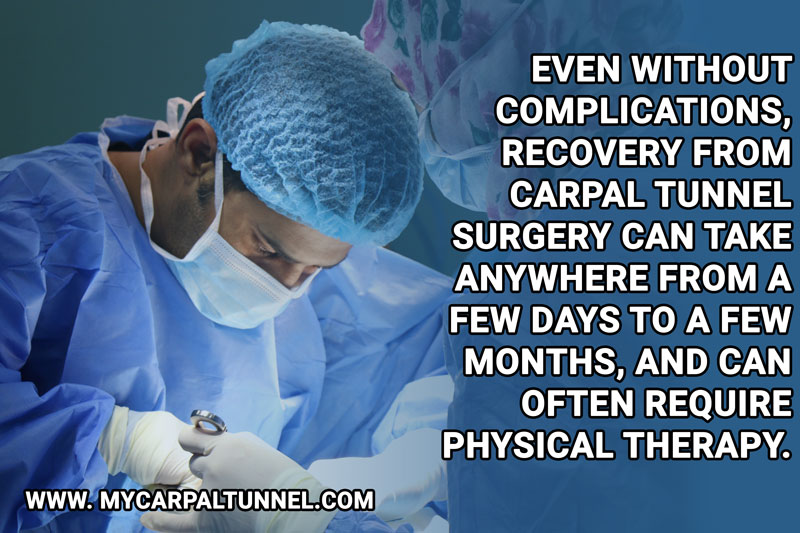CARPAL TUNNEL VS CUBITAL TUNNEL:
CAUSES & TREATMENTS
The main difference in cubital tunnel syndrome vs carpal tunnel syndrome is the nerve that’s affected. Whereas carpal tunnel syndrome affects the median nerve in the wrist, and tends to cause tingling in the thumb, index, and long fingers, cubital tunnel syndrome by contrast affects the ulnar nerve, located at the elbow, and tends to cause numbing or tingling in the ring and little fingers. Both carpal tunnel syndrome and cubital tunnel syndrome are caused by the compression of the respective nerves, which can arise from a lifestyle of holding a certain position for extended periods of time. In this article we’ll explore the difference between carpal tunnel vs cubital tunnel syndrome, including causes, symptoms, and treatments.
THE NERVES THAT AFFECT YOUR HAND IN THE CARPAL TUNNEL VS CUBITAL TUNNEL
There are three major nerves that run through your forearm and serve to provide function to your hand: the median nerve, the radial nerve, and the ulnar nerve. The median nerve runs through the carpal tunnel at the wrist, and serves to innervate the anterior muscles of the forearm, the wrist, the hand, and the thumb and fingers. In other words, you can thank your median nerve for your typing skills — and other basic motor functions of your hand and forearm.
The radial nerve, while providing support and sensation for some of these areas, also innervates the tricep muscles. It runs down your forearm along your brachial artery and eventually splits into two branches, the ‘deep branch’ and the ‘superficial branch,’ both of which help you feel and move areas in your forearm.
The ulnar nerve also runs down your arm and serves to innervate parts of your hand and forearm — specifically the ring and little finger, and corresponding palm areas. It helps out with that typing process. But the key difference here is the ulnar nerve runs through a groove in the humerus bone at the elbow; here in this groove is it’s generally protected, but also susceptible to some specific types of injury if the bone or joint is held at certain positions for too long — this is how one can develop Cubital Tunnel Syndrome.
THE ULNAR NERVE AND CUBITAL TUNNEL SYNDROME
When comparing Carpal vs Cubital Tunnel Syndrome, the latter is much less common, as Cubital Tunnel Syndrome occurs only in about 30 people out of every 100,000. The cause and symptoms, however, are often similar. Both are caused by the compression or irritation of a nerve, and both cause pain, numbness, or tingling in fingers — albeit different fingers. Cubital Tunnel Syndrome will typically affect ring and little fingers, and it’s caused when that ulnar nerve is compressed at the elbow — where it travels through the cubital tunnel at the groove in the humerus. The ulnar nerve is your ‘funny bone,’ and is the cause of that tingling feeling when you bang your elbow the wrong way. You can develop Cubital Tunnel Syndrome by bending your elbow too much with strenuous work, leaning on your elbow too much, or injuring the area. Arthritis and bone spurs can cause irritation on the ulnar nerve and lead to Cubital Tunnel Syndrome as well; often, however, the cause of the syndrome isn’t clear cut and is left unknown.

In addition to pain, numbness, or tingling of the ring or little fingers, you might experience muscle weakness, weak grip or clumsiness, pain in your elbow, or pain in your elbow or hand while sleeping. Always be sure to check with a doctor for a complete diagnosis.
HOW TO TREAT CUBITAL TUNNEL SYNDROME
The most common way to treat Cubital Tunnel Syndrome is simply to adjust your activity. If you have a habit or daily activity that causes stress on the elbow, change those habits. You might wear an elbow pad to protect against hard surfaces, or an elbow brace to keep the elbow from bending, especially while sleeping. Anti-inflammatory medications, like ibuprofen, could help with the nerve swelling and the pain, and certain exercises can help relieve the issue over time. In extreme cases, your doctor may recommend surgery or steroid treatment. Talk to your provider to see what’s right for you.
THE MEDIAN NERVE AND CARPAL TUNNEL SYNDROME
With the rise of office culture and how many jobs now tend to require extended periods of time typing at a computer or in assembly line, Carpal Tunnel Syndrome has become incredibly common. Nearly 1 in 6 adults are affected by Carpal Tunnel Syndrome, and women are three times more likely to develop CTS than men. Like the less common Cubital Tunnel Syndrome, Carpal Tunnel Syndrome is caused by the compression of a nerve — in this case the median nerve at the wrist, which travels through the carpal tunnel. Those suffering from this syndrome could experience numbness, tingling, or pain in their thumb, index, or long fingers and the corresponding palm; they may lose the ability to differentiate between hot and cold or experience muscle weakness in these areas. At first, they might experience symptoms only at night, as many people sleep with flexed wrists. That flex is what applies pressure to the carpal tunnel, and by extension to the median nerve, causing it to become irritated or swollen. Injury, overuse, or cysts and tumors can also cause this compression; in some cases, the cause is unknown.
In any case, if left untreated, CTS can cause permanent nerve damage and even result in the loss of function of the hand.

HOW TO TREAT CARPAL TUNNEL VS CUBITAL TUNNEL SYNDROME
Whereas Cubital Tunnel Syndrome treatment deals with the elbow joint and releasing pressure from the ulnar nerve, Carpal Tunnel Syndrome treatment likewise deals with the wrist joint and releasing pressure from that median nerve. If you believe you have CTS or have been diagnosed, start treatments as soon as possible — the sooner you deal with the problem, the less likely you’ll need surgical treatment.


First, make sure there are no underlying issues, such as arthritis or diabetes, that could be causing your CTS. Then, just like with Cubital Tunnel Syndrome, adjust whatever habit or lifestyle that might be causing the compression. Give the wrist plenty of rest, and stop whenever you feel symptoms flare up. Exercises like yoga have been shown to ease the symptoms of carpal tunnel, and cold packs or anti-inflammatory medicines can help with the swelling. If none of these treatments work, surgery is often recommended by doctors to prevent permanent damage. However, there are numerous risks associated with Carpal Tunnel surgery.
One of the simplest, most affordable ways to treat Carpal Tunnel Syndrome — with the lowest risk — is The Carpal Solution. This unique new therapy was developed by doctors who specializes specifically in CTS treatment, and has been shown to provide complete remission from CTS within six weeks.
It’s pain-free and incredibly easy to implement: simply wear the specially designed brace during sleep and enjoy relief from symptoms within a month and a half. During this time, the Carpal Solution gently reshapes the soft tissue in and around your carpal tunnel by tugging on three key points on the palm. This gentle but consistent stretching motion releases pressure from the median nerve without interrupting your life, daily activities, or job.
Why The Carpal Solution is The Next Best Thing to a Cure for CTS:
- It works for 97% of people with Carpal Tunnel.
- It is an all-natural carpal tunnel treatment.
- It is safe and has no downtime.
- It is clinically documented to work.
- It is convenient, with treatment during sleep.
- The Carpal Solution was developed by Doctors working with patients.
- It is patented medical technology.
- It has been registered with the FDA.
- It has been used by over 150,000 people.
- When it comes back after 2 to 7 years, you simply repeat the nighttime treatment.








